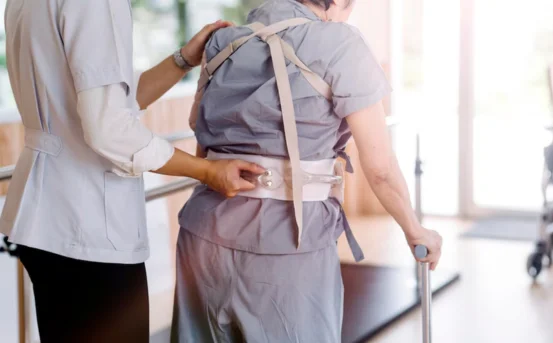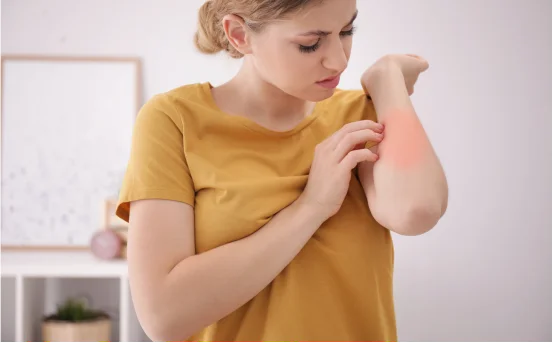Kidney stones, also known as renal calculi, are hard mineral and salt deposits that form inside the kidneys. These stones can cause excruciating pain and lead to serious complications if left undiagnosed and untreated. The good news is that with advancements in diagnostic imaging and laboratory testing, kidney stones can now be identified quickly and accurately.
Early diagnosis of kidney stones is crucial not only to manage pain and prevent complications but also to identify the type and cause of the stone formation. With timely detection, most kidney stone disease can be treated effectively through medication, lifestyle changes, or minor procedures. In some cases, early diagnosis may even help patients avoid surgery altogether.
Understanding Kidney Stone Symptoms
Before reaching the stage of diagnosis, most people experience some telltale signs that something is wrong. The most common symptom is sudden and severe pain in the back, side, lower abdomen, or groin often described as one of the worst pains a person can endure. This pain may come in waves and vary in intensity.
Other common symptoms that prompt medical evaluation include :-
-
Blood in urine (hematuria)
-
Frequent urge to urinate
-
Pain or burning during urination
-
Nausea and vomiting
-
Cloudy or foul-smelling urine
-
Fever and chills (may indicate infection)
If any of these symptoms occur, especially in combination, it’s important to seek medical attention. Timely diagnosis of kidney stones can prevent complications such as urinary tract infections or kidney damage.
Diagnosis of Kidney Stones
The diagnosis of kidney stones typically begins with a clinical assessment and is followed by imaging tests and laboratory investigations. Doctors use a combination of methods to determine the size, type, and location of the stones.
- Medical History and Physical Examination
The first step in diagnosing kidney stones is discussing the patient’s symptoms and medical history. The doctor may ask about :-
-
Onset, duration, and location of pain
-
Previous history of kidney stones
-
Family history of kidney disease or stones
-
Dietary habits and fluid intake
-
Use of certain medications or supplements
A physical exam may include checking for tenderness in the abdomen or flank area, which can help localize the pain and assess its severity.
- Urinalysis (Urine Test)
A simple yet highly informative test, urinalysis helps detect several signs of kidney stones :-
-
Presence of red blood cells (hematuria)
-
White blood cells or bacteria, indicating infection
-
Crystals that may suggest the type of stone
-
pH level of urine, which can hint at certain stone types (e.g., uric acid stones in acidic urine)
In some cases, a 24-hour urine collection may be ordered to check for abnormal levels of minerals or other substances that contribute to stone formation.
- Blood Tests
Blood tests are used to identify conditions that may be causing or contributing to stone formation. These include :-
-
Calcium levels :- Elevated calcium can point to calcium-based stones
-
Uric acid levels :- High uric acid may suggest gout or uric acid stones
-
Kidney function tests (like creatinine and BUN) :- To assess how well the kidneys are working
These lab results also help guide long-term prevention strategies after treatment.
- Imaging Tests
Imaging plays a central role in the diagnosis of kidney stones. It helps in identifying the stone’s location, size, and potential complications such as obstruction.
- Non-Contrast Helical CT Scan
A non-contrast CT (computed tomography) scan of the abdomen and pelvis is considered the gold standard for detecting kidney stones. It provides detailed images and can identify stones of any size or composition. It also rules out other possible causes of abdominal pain.
- Ultrasound
Ultrasound is often used in pregnant women, children, or those avoiding radiation exposure. While it is less sensitive than CT, it can still detect larger stones and signs of kidney swelling (hydronephrosis) due to obstruction.
- X-ray of the Abdomen (KUB X-ray)
A Kidneys, Ureters, and Bladder (KUB) X-ray may be used to follow the progress of known stones, especially if they are radiopaque (visible on X-ray). However, it can miss smaller or non-calcified stones like uric acid stones.
- Intravenous Pyelogram (IVP)
Although less commonly used today, an IVP is a type of X-ray in which a contrast dye is injected into a vein. It highlights the urinary tract and helps detect obstructions or abnormalities.
Differential Diagnosis: Ruling Out Other Conditions
Since kidney stone symptoms can mimic other disorders such as appendicitis, urinary tract infections, or gynecological problems, accurate diagnosis is essential. Imaging and lab tests help rule out other potential causes of abdominal or flank pain.
Stone Analysis After Passage or Removal
Once a stone passes naturally or is surgically removed, stone analysis can be done to determine its chemical composition. Common types include :-
-
Calcium oxalate
-
Calcium phosphate
-
Uric acid
-
Struvite (infection stones)
-
Cystine (genetic disorder-related stones)
Knowing the type of stone helps in creating a personalized prevention plan, including dietary changes and medications.
When to Seek Emergency Diagnosis
In some cases, kidney stones require immediate medical evaluation. Seek emergency care if you experience :-
-
Unbearable pain that doesn’t improve
-
High fever with chills
-
Inability to pass urine
-
Persistent nausea and vomiting
-
Signs of infection
Delaying diagnosis and treatment in such situations can lead to serious health issues, including kidney damage or sepsis.
Conclusion
The diagnosis of kidney stones is a multi-step process that includes a thorough clinical assessment, urine and blood tests, and advanced imaging techniques. Identifying kidney stones early allows for timely treatment, reduces the risk of complications, and improves long-term outcomes.























